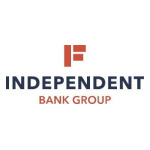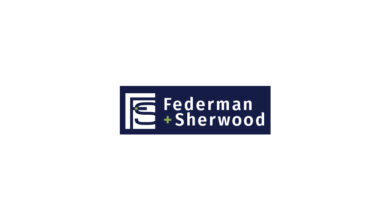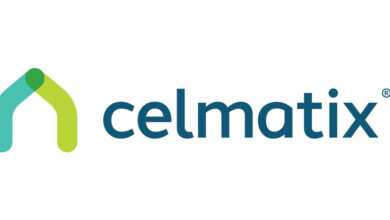Independent Bank Group, Inc. Reports First Quarter Financial Results and Declares and Increases Quarterly Dividend

MCKINNEY, Texas–(BUSINESS WIRE)–Independent Bank Group, Inc. (NASDAQ: IBTX), the holding company for Independent Bank, today announced net income of $60.0 million, or $1.39 per diluted share, for the quarter ended March 31, 2021, compared to $44.2 million, or $1.03 per diluted share, for the quarter ended March 31, 2020 and $58.3 million, or $1.35 per diluted share, for the quarter ended December 31, 2020.
The Company also announced that its Board of Directors declared a quarterly cash dividend in the amount of $0.32 per share of common stock. The dividend will be payable on May 20, 2021 to stockholders of record as of the close of business on May 6, 2021.
Highlights
- Continued solid financial performance in the first quarter:
- Net income of $60.0 million, or $1.39 per diluted share and adjusted (non-GAAP) net income of $60.1 million, or $1.39 per diluted share
- Return on average assets of 1.37%
- Return on average equity of 9.78%, and return on (non-GAAP) tangible equity of 17.29%
- Sustained organic deposit growth of 11.4% annualized for the quarter
- Strong capital levels with an estimated total capital ratio of 14.13%, leverage ratio of 9.01%, and (non-GAAP) tangible common equity (TCE) ratio of 8.30%
- Increased dividend based on strong financial performance and capital position
“These strong first quarter results reflect disciplined execution across our great markets,” said Independent Bank Group Chairman and CEO David R. Brooks. “Our teams in Texas and Colorado have been unwavering in their focus on serving our customers and communities throughout the pandemic, and our company’s consistent profitability over the past year is a testament to the strength of our diversified community banking model. With healthy credit metrics, strong capital levels, and a substantial liquidity position, our company is well-positioned to capitalize on significant growth opportunities as the economic recovery accelerates across our footprint.”
First Quarter 2021 Operating Results
Net Interest Income
- Net interest income was $129.7 million for first quarter 2021 compared to $123.2 million for first quarter 2020 and $132.8 million for fourth quarter 2020. The increase in net interest income from the prior year was driven by decreased funding costs offset by decreased earnings on assets due to lower yields and accretion. The slight decrease from the linked quarter was due to lower yields on loans and interest bearing deposits, offset by a decrease in interest expense due to lower rates paid on deposit products, primarily money market accounts and certificates of deposit. The quarter ended March 31, 2021 includes $6.2 million of acquired loan accretion compared to $6.8 million in fourth quarter 2020 and $9.1 million in first quarter 2020.
- The average balance of total interest-earning assets grew by $2.8 billion and totaled $16.0 billion for the quarter ended March 31, 2021 compared to $13.2 billion for the quarter ended March 31, 2020 and increased $548.2 million from $15.5 billion for the quarter ended December 31, 2020. The increase from the prior year was primarily related to higher average loan balances including Paycheck Protection Program (PPP) loans and mortgage warehouse loans, as well as an increase in average interest-bearing deposits with correspondent banks due to significant deposit growth for the year over year period. The increase from the linked quarter is primarily due to increased average interest-bearing deposits but also due to an increase in taxable securities.
- The yield on interest-earning assets was 3.75% for first quarter 2021 compared to 4.78% for first quarter 2020 and 3.91% for fourth quarter 2020. The overall asset yield is down for both periods due to significant growth in interest bearing cash balances this past year, as well as the addition of PPP loans and lower security yields. Average loan yield, net of all accretion decreased three (3) basis points from the linked quarter and 59 basis points from the prior year.
- The cost of interest-bearing liabilities, including borrowings, was 0.67% for first quarter 2021 compared to 1.42% for first quarter 2020 and 0.73% for fourth quarter 2020. The decrease from the prior year and linked quarter is primarily due to lower rates offered on our deposit products, while the prior year change is also due to rate decreases on short-term FHLB advances and other borrowings.
- The net interest margin was 3.29% for first quarter 2021 compared to 3.76% for first quarter 2020 and 3.42% for fourth quarter 2020. The net interest margin excluding all loan accretion was 3.13% for first quarter 2021 compared to 3.48% in first quarter 2020 and 3.24% for fourth quarter 2020. The decrease in net interest margin from the prior year was primarily due to the lower asset yields, increased liquidity and a decrease of $2.9 million in loan accretion income offset by the lower cost of funds of interest bearing liabilities. The 11 basis point decrease in the net interest margin excluding all loan accretion from the linked quarter is a result of lower asset yields in addition to excess liquidity which negatively impacted the margin by eight (8) basis points, offset by slightly lower cost of funds of interest bearing liabilities for the quarter.
Noninterest Income
- Total noninterest income increased $4.0 million compared to first quarter 2020 and decreased $1.3 million compared to fourth quarter 2020.
- The increase from the prior year primarily reflects an increase of $5.0 million in mortgage banking revenue. The increase was offset by decreases of $491 thousand in services charges on deposits. In addition, the prior year included gains on sales of securities of $356 thousand, compared to none in the current quarter. Mortgage banking revenue was higher in first quarter 2021 compared to prior year due to increased mortgage origination and refinance activity resulting from the low interest rate environment during the year over year period. It was also impacted by continued volatility in the market during the quarter, which resulted in fair value losses on our derivative hedging instruments of $323 thousand compared to first quarter 2020 loss of $1.6 million. The decrease in service charge income relates to lower transaction volumes of non-sufficient funds that have been impacted by the pandemic.
- The decrease from the linked quarter primarily reflects a decrease of $1.3 million in mortgage banking revenue due to decreased volumes and margins resulting from rate increases. The loss on derivative hedging instruments, as noted above, was reduced compared to fourth quarter 2020 loss of $4.3 million.
Noninterest Expense
- Total noninterest expense increased $684 thousand compared to first quarter 2020 and decreased $114 thousand compared to fourth quarter 2020.
- The increase in noninterest expense compared to first quarter 2020 is due primarily to an increase of $5.0 million in salaries and benefits expense offset by decreases of $2.0 million in other noninterest expense and other insignificant decreases in the following: $549 thousand in acquisition expenses, $544 thousand in professional fees, $431 thousand in occupancy expense, $373 thousand in advertising and public relations expense and $366 in other real estate expenses. The decrease in other noninterest expense is due to lower loan- and deposit-related expenses, charitable contributions, auto and travel expenses and other miscellaneous expenses.
- The decrease from the linked quarter is primarily related to small decreases in other noninterest expense, occupancy and communications and technology offset by a $1.5 million increase in salaries and benefits.
- Salaries and benefits expense was higher in first quarter 2021 compared to the prior year and linked quarter primarily due to additional stock grant amortization of $1.2 million on new restricted and performance stock grants, including $650 thousand of one-time catch up or accelerated vesting expense. In addition, the increase in first quarter 2021 was due to an overall increase in salaries, payroll taxes and 401k contributions due to higher headcount as well as higher signing bonuses and recruiting fees related to additions to the C&I team during first quarter 2021. Offsetting the increases is a $3.0 million increase in deferred salaries expense primarily due to the second round of PPP originations. The prior year increase is also due to increases of $1.3 million of contract labor costs due to PPP activity and $1.8 million in commissions and incentives due to higher mortgage production for the year over year period.
Provision for Credit Losses
- On January 1, 2021, the Company adopted the Current Expected Credit Loss (CECL) accounting standard replacing the incurred loss model with an expected credit loss methodology. Under CECL, the Company’s provision for credit losses includes the provision for loan losses and unfunded credit commitments. Upon adoption, the Company recorded an increase of $82.0 million, or 93.3%, to its combined allowance for credit losses on loans and unfunded commitments.
- Under CECL, the Company recorded a negative provision for credit losses of $2.5 million for first quarter 2021, a decrease of $10.9 million compared to $8.4 million provision expense for first quarter 2020 and a decrease of $6.4 million compared to $3.9 million provision expense for fourth quarter 2020. The decrease in first quarter 2021 provision expense was primarily related to decreased loan growth as well as changes within the commercial real estate and construction loan portfolios. Provision expense was elevated in the first and fourth quarters 2020 primarily due to general provision expense for economic factors related to COVID-19 as well as charge-offs or specific reserves taken during the respective periods.
- The allowance for credit losses on loans was $165.8 million, or 1.42% of total loans held for investment, net of mortgage warehouse purchase loans, at March 31, 2021, compared to $58.4 million, or 0.53% at March 31, 2020 and compared to $87.8 million, or 0.76% at December 31, 2020. The dollar and percentage increase from the prior year and linked quarter is primarily due to the CECL transition adjustment.
Income Taxes
- Federal income tax expense of $15.7 million was recorded for the quarter ended March 31, 2021, an effective rate of 20.8% compared to tax expense of $10.8 million and an effective rate of 19.7% for the quarter ended March 31, 2020 and tax expense of $15.4 million and an effective rate of 20.9% for the quarter ended December 31, 2020. The lower effective tax rate for the three months ended March 31, 2020 is primarily a result of a tax benefit recorded due to the net operating loss carryback provision allowed through the enactment of the CARES Act.
First Quarter 2021 Balance Sheet Highlights
Loans
- Total loans held for investment, net of mortgage warehouse purchase loans, were $11.7 billion at March 31, 2021 compared to $11.6 billion at December 31, 2020 and $11.0 billion at March 31, 2020. PPP loans totaled $912.2 million and $804.4 million as of March 31, 2021 and December 31, 2020, respectively. Loans excluding PPP loans decreased $241.0 million year over year, net of loan sales, primarily due to the economic dislocation caused by the pandemic.
- Average mortgage warehouse purchase loans remained consistent at $1.2 billion for the quarter ended March 31, 2021 and the quarter ended December 31, 2020, and increased from $547.3 million for the quarter ended March 31, 2020, an increase of $604.3 million, or 110.4% year over year. The volumes continue to be higher than anticipated due to the sustained low mortgage rate environment. In addition, the change from the prior year is reflective of the Company’s focused attention to grow the warehouse line of business.
Asset Quality
- Adoption of the CECL standard resulted in an after-tax reduction to retained earnings of $53.9 million. This adjustment was the result of a $80.9 million increase in the allowance for credit losses on loans, with $13.0 million attributable to purchase credit deteriorated loans (PCD), and increasing the allowance by 92.0% to $168.7 million or 1.42% of loans held for investment. The adjustment also included an increase of $1.1 million in other liabilities related to the allowance for credit losses on off-balance sheet credit exposures.
- Total nonperforming assets increased to $61.0 million, or 0.34% of total assets at March 31, 2021, compared to $52.0 million or 0.29% of total assets at December 31, 2020, and increased from $31.6 million, or 0.20% of total assets at March 31, 2020.
- The increase in nonperforming loans and nonperforming assets from the linked quarter is primarily due to the addition of $10.0 million in PCD loans, which were excluded prior to CECL adoption, offset by paydowns or payoffs of $1.1 million.
- The increase in nonperforming loans and nonperforming assets from the prior year is primarily due to the PCD additions mentioned above as well as nonaccrual loan additions of a $12.6 million energy loan and a $15.1 million commercial real estate credit, offset by a $3.5 million charge-off on an energy credit and a $1.1 million commercial loan charge-off. In addition, nonperforming assets were reduced by net dispositions of $2.5 million in other real estate owned properties.
- Charge-offs were 0.01% annualized in the first quarter 2021 compared to 0.11% annualized in the linked quarter and 0.05% annualized in the prior year quarter. Charge-offs were elevated in fourth quarter 2020 due to a $3.5 million energy loan charge-off which had been fully reserved in prior periods.
Deposits, Borrowings and Liquidity
- Total deposits were $14.8 billion at March 31, 2021 compared to $14.4 billion at December 31, 2020 and compared to $11.9 billion at March 31, 2020. The increase in deposits from the linked quarter is primarily due to organic growth of approximately $405 million or 11.4% annualized for the quarter while deposits for the year over year period increased $2.9 billion, or 24.6%.
- Total borrowings (other than junior subordinated debentures) were $683.4 million at March 31, 2021, a decrease of $3.8 million from December 31, 2020 and a decrease of $469.5 million from March 31, 2020. The linked quarter change reflects a $4.0 million reduction in borrowings against the Company’s unsecured revolving line of credit with an unrelated commercial bank. The change from prior year reflects the reduction of short-term FHLB advances, as well as proceeds of $127.5 million, net of issuance costs, related to subordinated debentures issued in third quarter 2020 and $2.5 million in borrowings against the Company’s unsecured revolving line of credit with an unrelated commercial bank.
Capital
- The Company continues to be well capitalized under regulatory guidelines. At March 31, 2021, our estimated common equity Tier 1 to risk-weighted assets, Tier 1 capital to average assets, Tier 1 capital to risk-weighted assets and total capital to risk-weighted asset ratios were 10.94%, 9.01%, 11.36% and 14.13%, respectively, compared to 10.33%, 9.12%, 10.74%, and 13.32%, respectively, at December 31, 2020 and 9.95%, 9.67%, 10.38%, and 12.05%, respectively at March 31, 2020.
- The Company has elected to adopt the three-year transition option related to the CECL $53.9 million cumulative-effect reduction to retained earnings pursuant to the Federal Reserve Board’s final rule issued in February 2019. Such deferral has been applied in the March 31, 2021 capital ratios presented.
Subsequent Events
The Company is required, under generally accepted accounting principles, to evaluate subsequent events through the filing of its consolidated financial statements for the quarter ended March 31, 2021 on Form 10-Q. As a result, the Company will continue to evaluate the impact of any subsequent events on critical accounting assumptions and estimates made as of March 31, 2021 and will adjust amounts preliminarily reported, if necessary.
About Independent Bank Group
Independent Bank Group, through its wholly owned subsidiary, Independent Bank, provides a wide range of relationship-driven commercial banking products and services tailored to meet the needs of businesses, professionals and individuals. Independent Bank Group operates in four market regions located in the Dallas/Fort Worth, Austin and Houston areas in Texas and the Colorado Front Range area, including Denver, Colorado Springs and Fort Collins.
Conference Call
A conference call covering Independent Bank Group’s first quarter earnings announcement will be held on Tuesday, April 27, 2021 at 8:30 a.m. (EST) and can be accessed by the webcast link, https://webcast-eqs.com/indepbankgroup20210427/en or by calling 1-877-407-0989 and by identifying the meeting number 13718272 or by identifying “Independent Bank Group First Quarter 2021 Earnings Conference Call.” The conference materials will also be available by accessing the Investor Relations page of our website, www.ifinancial.com. If you are unable to participate in the live event, a recording of the conference call will be accessible via the Investor Relations page of our website.
Forward-Looking Statements
From time to time the Company’s comments and releases may contain “forward-looking statements” within the meaning of the Private Securities Litigation Reform Act of 1995 that are subject to risks and uncertainties and are made pursuant to the safe harbor provisions of Section 27A of the Securities Act, as amended, and Section 21E of the Securities Exchange Act of 1934, as amended, and other related federal security laws. Forward-looking statements include information about the Company’s possible or assumed future results of operations, including its future revenues, income, expenses, provision for taxes, effective tax rate, earnings per share and cash flows, its future capital expenditures and dividends, its future financial condition and changes therein, including changes in the Company’s loan portfolio and allowance for credit losses, the Company’s future capital structure or changes therein, the plan and objectives of management for future operations, the Company’s future or proposed acquisitions, the future or expected effect of acquisitions on the Company’s operations, results of operations and financial condition, the Company’s future economic performance and the statements of the assumptions underlying any such statement. Such statements are typically, but not exclusively, identified by the use in the statements of words or phrases such as “aim,” “anticipate,” “estimate,” “expect,” “goal,” “guidance,” “intend,” “is anticipated,” “is estimated,” “is expected,” “is intended,” “objective,” “plan,” “projected,” “projection,” “will affect,” “will be,” “will continue,” “will decrease,” “will grow,” “will impact,” “will increase,” “will incur,” “will reduce,” “will remain,” “will result,” “would be,” variations of such words or phrases (including where the word “could,” “may” or “would” is used rather than the word “will” in a phrase) and similar words and phrases indicating that the statement addresses some future result, occurrence, plan or objective. The forward-looking statements that the Company makes are based on its current expectations and assumptions regarding its business, the economy, and other future conditions. Because forward-looking statements relate to future results and occurrences, they are subject to inherent uncertainties, risks, and changes in circumstances that are difficult to predict. The Company’s actual results may differ materially from those contemplated by the forward looking statements, which are neither statements of historical fact nor guarantees or assurances of future performance. Many possible events or factors could affect the Company’s future financial results and performance and could cause those results or performance to differ materially from those expressed in the forward-looking statements. These possible events or factors include, but are not limited to: 1) the disruption to local, regional, national and global economic activity caused by infectious disease outbreaks, including the recent outbreak of coronavirus, or COVID-19, and the significant impact that such outbreak has had and may have on the Company’s growth, operations, earnings and asset quality; 2) the Company’s ability to sustain its current internal growth rate and total growth rate; 3) changes in geopolitical, business and economic events, occurrences and conditions, including changes in rates of inflation or deflation, nationally, regionally and in the Company’s target markets, particularly in Texas and Colorado; 4) worsening business and economic conditions nationally, regionally and in the Company’s target markets, particularly in Texas and Colorado, and the geographic areas in those states in which the Company operates; 5) the Company’s dependence on its management team and its ability to attract, motivate and retain qualified personnel; 6) the concentration of the Company’s business within its geographic areas of operation in Texas and Colorado; 7) changes in asset quality, including increases in default rates on loans and higher levels of nonperforming loans and loan charge-offs generally, and specifically resulting from the economic dislocation caused by the COVID-19 pandemic; 8) concentration of the loan portfolio of Independent Bank, before and after the completion of acquisitions of financial institutions, in commercial and residential real estate loans and changes in the prices, values and sales volumes of commercial and residential real estate; 9) the ability of Independent Bank to make loans with acceptable net interest margins and levels of risk of repayment and to otherwise invest in assets at acceptable yields and presenting acceptable investment risks; 10) inaccuracy of the assumptions and estimates that the managements of the Company and the financial institutions that the Company acquires make in establishing reserves for credit losses and other estimates generally, and specifically as a result of the effect of the COVID-19 pandemic; 11) lack of liquidity, including as a result of a reduction in the amount of sources of liquidity the Company currently has; 12) material increases or decreases in the amount of deposits held by Independent Bank or other financial institutions that the Company acquires and the cost of those deposits; 13) the Company’s access to the debt and equity markets and the overall cost of funding its operations; 14) regulatory requirements to maintain minimum capital levels or maintenance of capital at levels sufficient to support the Company’s anticipated growth; 15) changes in market interest rates that affect the pricing of the loans and deposits of each of Independent Bank and the financial institutions that the Company acquires and that affect the net interest income, other future cash flows, or the market value of the assets of each of Independent Bank and the financial institutions that the Company acquires, including investment securities; 16) fluctuations in the market value and liquidity of the securities the Company holds for sale, including as a result of changes in market interest rates; 17) effects of competition from a wide variety of local, regional, national and other providers of financial, investment and insurance services; 18) changes in economic and market conditions, including the economic dislocation resulting from the COVID-19 pandemic, that affect the amount and value of the assets of Independent Bank and of financial institutions that the Company acquires; 19) the institution and outcome of, and costs associated with, litigation and other legal proceedings against one of more of the Company, Independent Bank and financial institutions that the Company acquires or to which any of such entities is subject; 20) the occurrence of market conditions adversely affecting the financial industry generally, including the economic dislocation resulting from the COVID-19 pandemic; 21) the impact of recent and future legislative regulatory changes, including changes in banking, securities, and tax laws and regulations and their application by the Company’s regulators, and changes in federal government policies, as well as regulatory requirements applicable to, and resulting from regulatory supervision of, the Company and Independent Bank as a financial institution with total assets greater than $10 billion; 22) changes in accounting policies, practices, principles and guidelines, as may be adopted by the bank regulatory agencies, the Financial Accounting Standards Board, the SEC and the Public Company Accounting Oversight Board, as the case may be; 23) governmental monetary and fiscal policies, including changes resulting from the implementation of the new Current Expected Credit Loss accounting standard; 24) changes in the scope and cost of FDIC insurance and other coverage; 25) the effects of war or other conflicts, acts of terrorism (including cyber attacks) or other catastrophic events, including natural disasters such as storms, droughts, tornadoes, hurricanes and flooding, that may affect general economic conditions; 26) the Company’s actual cost savings resulting from previous or future acquisitions are less than expected, the Company is unable to realize those cost savings as soon as expected, or the Company incurs additional or unexpected costs; 27) the Company’s revenues after previous or future acquisitions are less than expected; 28) the liquidity of, and changes in the amounts and sources of liquidity available to the Company, before and after the acquisition of any financial institutions that the Company acquires; 29) deposit attrition, operating costs, customer loss and business disruption before and after the Company completed acquisitions, including, without limitation, difficulties in maintaining relationships with employees, may be greater than the Company expected; 30) the effects of the combination of the operations of financial institutions that the Company has acquired in the recent past or may acquire in the future with the Company’s operations and the operations of Independent Bank, the effects of the integration of such operations being unsuccessful, and the effects of such integration being more difficult, time consuming, or costly than expected or not yielding the cost savings the Company expects; 31) the impact of investments that the Company or Independent Bank may have made or may make and the changes in the value of those investments; 32) the quality of the assets of financial institutions and companies that the Company has acquired in the recent past or may acquire in the future being different than it determined or determine in its due diligence investigation in connection with the acquisition of such financial institutions and any inadequacy of credit loss reserves relating to, and exposure to unrecoverable losses on, loans acquired; 33) the Company’s ability to continue to identify acquisition targets and successfully acquire desirable financial institutions to sustain its growth, to expand its presence in the Company’s markets and to enter new markets; 34) general business and economic conditions in the Company’s markets change or are less favorable than expected generally, and specifically as a result of the COVID-19 pandemic; 35) changes occur in business conditions and inflation generally, and specifically as a result of the COVID-19 pandemic; 36) an increase in the rate of personal or commercial customers’ bankruptcies generally, and specifically as a result of the COVID-19 pandemic; 37) technology-related changes are harder to make or are more expensive than expected; 38) attacks on the security of, and breaches of, the Company’s and Independent Bank’s digital information systems, the costs the Company or Independent Bank incur to provide security against such attacks and any costs and liability the Company or Independent Bank incurs in connection with any breach of those systems; 39) the potential impact of technology and “FinTech” entities on the banking industry generally; 40) the other factors that are described or referenced in Part I, Item 1A, of the Company’s Annual Report on Form 10-K filed with the SEC on March 1, 2021, under the caption “Risk Factors”; and 41) other economic, competitive, governmental, regulatory, technological and geopolitical factors affecting the Company’s operations, pricing and services.
Contacts
Analysts/Investors:
Paul Langdale
Senior Vice President, Director of Corporate Development
(972) 562-9004
[email protected]
Michelle Hickox
Executive Vice President, Chief Financial Officer
(972) 562-9004
[email protected]
Media:
Schwinn Feng
Chief Marketing Officer
(469) 301-2706
[email protected]




